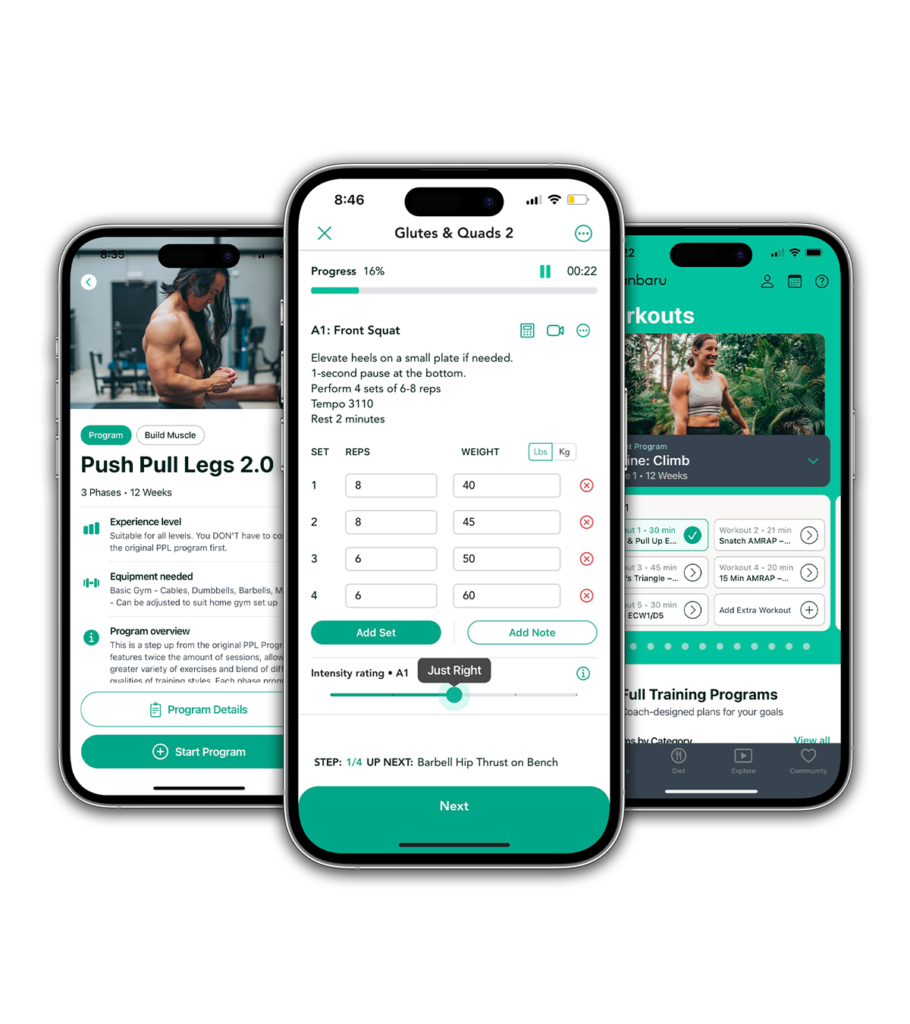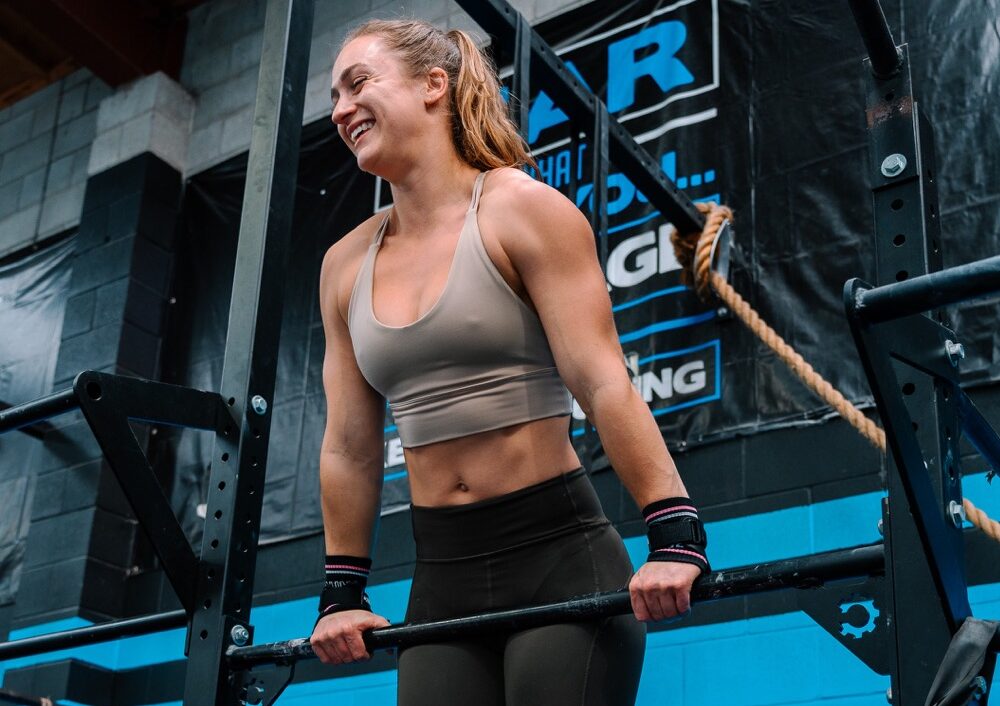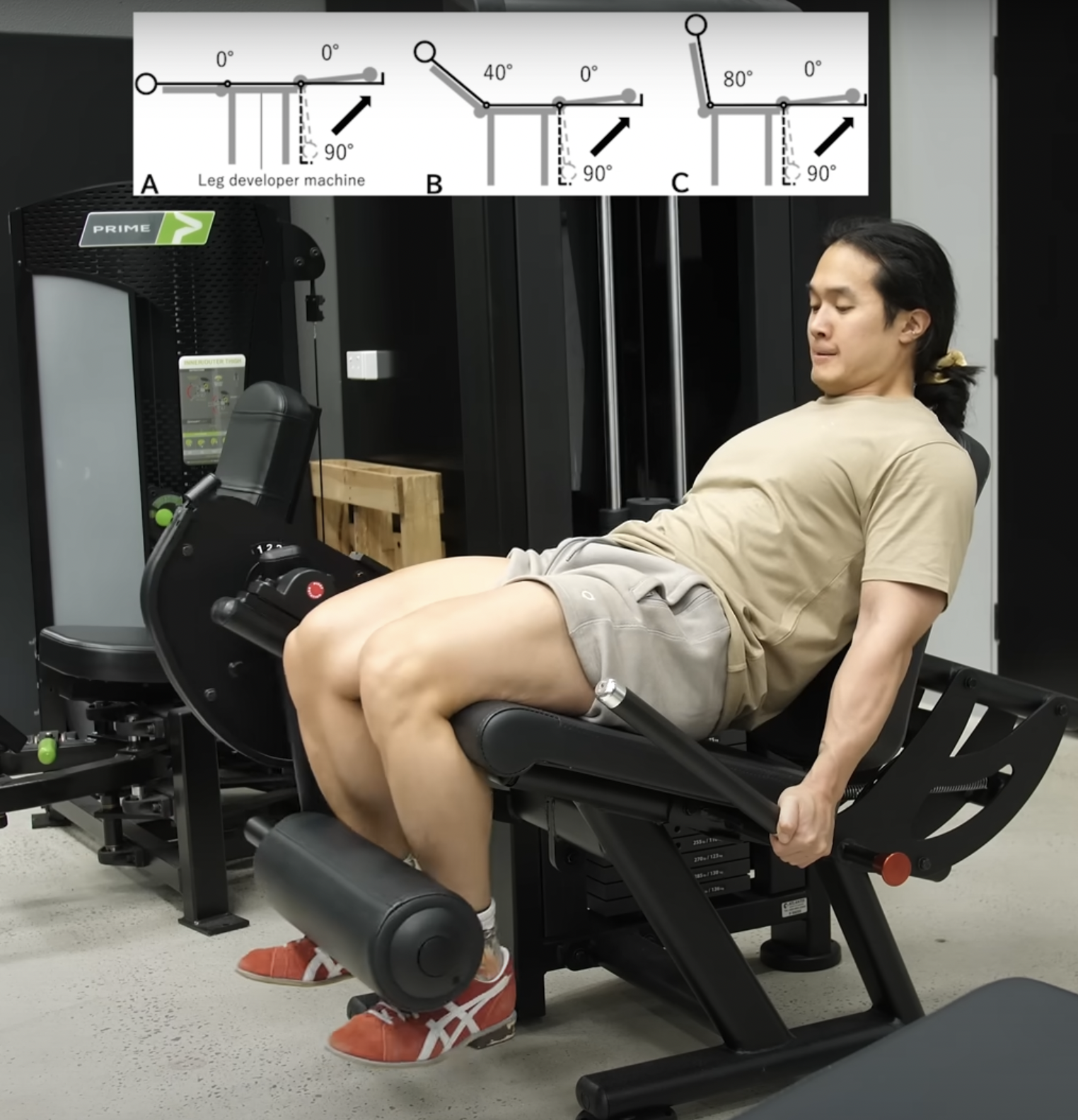The kipping bar muscle up relies on a strong swing and a powerful hip extension to drive you up over the bar. But the hip extension piece can be very confusing – all the other times you’ve aggressively extended the hips, you probably had your feet on the floor. We do hip extensions when we deadlift, olympic lift, kettlebell swing, and much more – but it’s weird to do a hip extension with your feet in the air and try to generate force from that movement.
The following is a series of hip extension drills that I use in varying contexts to get people to understand how to use an aggressive hip drive to generate movement and rotation on an axis. Some of them might click for you, others won’t – that’s okay! See which ones you feel you get an “aha” moment from and feel free to repeat them later in your BMU learning process if you think they are helpful.
Simple drills
The first 5 drills are simple, hip extension-only pieces to help you understand the extension of the hips and how you can use that to manipulate your body in space.
Dowel glide kip hip extension
Technique
Lying on your back holding the dowel/broomstick overhand grip like a barbell, bring your knees toward your face with your legs as straight as is comfortable. Place the dowel on your ankles, shins or knees, then aggressively open the hips by squeezing the glutes, keeping yourself in a hollow body and tracing the dowel up the legs as you go. You should roll from your back into a seated position due to the force of the hip opening.
Med ball hip extension
Technique
Lie on your back like the dowel drill above, then roll backward enough to slide the medball under your lower back (not bum – it needs to be higher than that). Repeat the same hip-close, hip-open movement by bringing the knees toward the face with relatively straight legs, then aggressively driving them open. You should flip over the top of the medball, landing in a seated position on the ball. You might roll off, but you’re not falling far – just be aware that it might happen.
Turnover to L Sit
Technique
Using the same hip motion as the previous two exercises, roll from your back into a seated position, catching yourself on the plates and continuously pressing down into them so that when you come over the top, your arms stay straight, and don’t bend much or at all.
Floor hip pop to low band
Technique
Set a 2 thick bands in a rack above your knees but below your mid-thigh. Lie on the ground in front of the band and repeat the same motion as previous – knees to face, then explosive hip drive. Catch your legs (lower calf) in the band and maintain a rigid body line so that you land in the band and your whole body bounces without breaking position at the knees, hips or back.
Heels elevated hip extension (ring)
Technique
With your heels elevated on a low box and your body hanging horizontally down below the rings, drop the hips toward the floor. Now explode them up with a powerful hip extension and control your body line to keep it horizontal by pulling the rings out wide. Only your heels, not your whole foot, should be on the box.
Heels elevated hip extension (ring)
Technique
With your heels elevated on a low box and your body hanging horizontally down below the rings, drop the hips toward the floor. Now explode them up with a powerful hip extension and control your body line to keep it horizontal by pulling the rings out wide. Only your heels, not your whole foot, should be on the box.
Hanging dynamic drills
The first 5 drills are simple, hip extension-only pieces to help you understand the extension of the hips and how you can use that to manipulate your body in space.
Pull to pop – bar in rack
What is this?
An early exposure to the muscle up movement: pulling your quads toward the bar, then aggressively driving the hips to create elevation through the hips and shoulders.
Technique
Set the bar low enough in the rack that you can reach it while sitting on the floor. Sit slightly in front of the bar. Rock forward, then rock back and pull your knees toward the bar while pulling on the bar with your arms straight. This should pull you behind the bar. As you are moving backward, quickly open up the hips to full extension and catch your feet on the floor.
Banded hip pop
What is this?
The first and friendliest exposure to get you to hip extend on the bar: it’s friendly because your feet get to push into something (the band) which makes the concept slightly less foreign.
Technique
Loop both your feet into a relatively thick band, with legs straight. Swing slightly backward, then slightly forward, then as you shift backward form a hollow, swing through to your arch, and do the hip pop. The hip pop here will mean you lift your toes to just below the height of your chest, then aggressively drive the hips up and punch your feet down into the band aiming for the floor in front of you. As you do this, you need to push down hard into the bar with your arms straight. If you get the timing right, you will float up behind the bar with your shoulders higher than your hips.
Hip pop to boxes
What is this?
An unassisted hip pop, but still gives you a target and a sense of grounding as you finish the hip extension. Set up two boxes either side of yourself behind the bar.
Technique
Jump to hollow, swing to arch, and begin the hip pop. Pull the toes to the height of your chest while pulling your shoulders behind the bar. From this position, extend the hips while still pushing down into the bar, catching your feet on the boxes in full hip extension.
As you get better at this, you can raise the height of the boxes so you are caching higher and higher
Hip pop – hips to bar
What is this?
The “all grown up” version of the hip pops, the hips to bar is a precursor movement to the bar muscle up. To be able to turn over, you should be able to jump to the bar, initiate the hip pop and elevate yourself so you can easily see over the top of the bar, with your arms at least parallel with the bar.
Technique
Same as all your other hip pop movements – good timing, huge hip drive, and continuous straight arm pressure down into the bar.

Ready to workout?
Follow proven programs written by expert coaches, delivered in an easy-to-use app built by lifters, for lifters.





